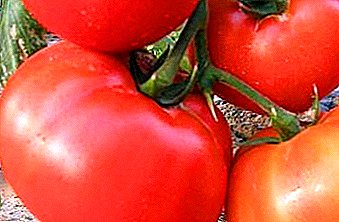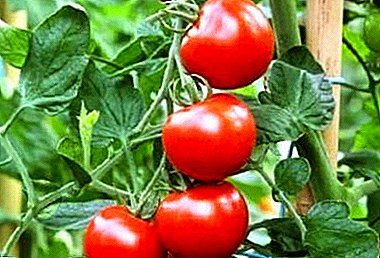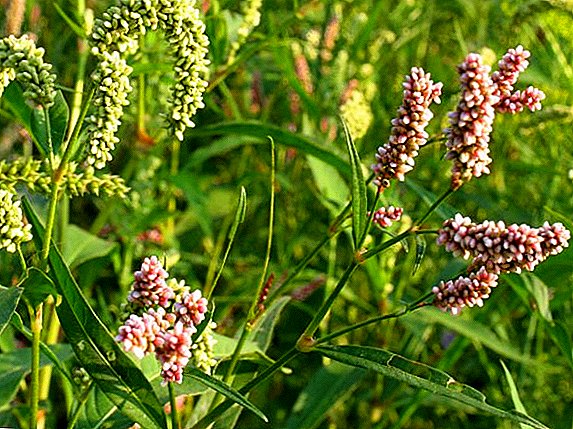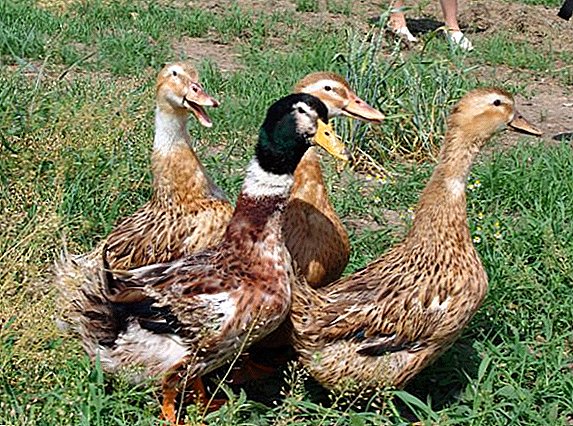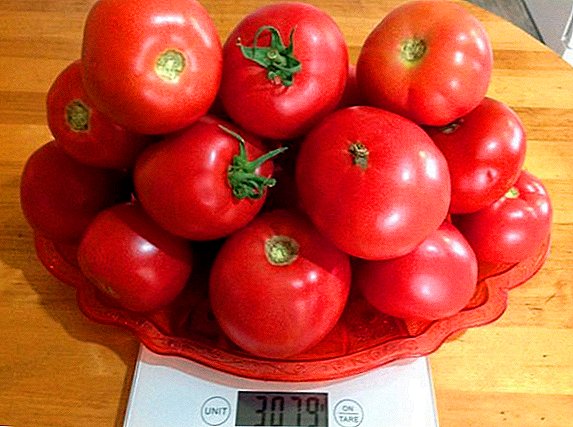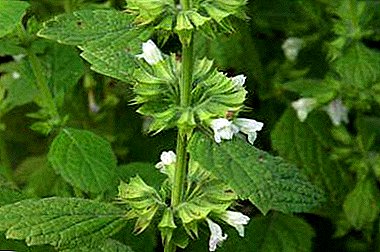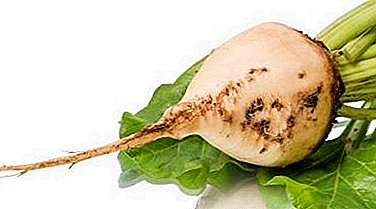
Beets are widely used in cooking and are used in production, but not everyone knows how to distinguish, for example, sugar from fodder.
Why are fodder varieties “given away” to animals, sugar is produced from sugar beets, and how does an ordinary beet differ from other famous species?
Below in the article we will analyze in detail the differences between these types of beets, which will be presented in the form of a convenient table.
What happens?
There are only three types:
- Ordinary (dining room).
- Aft.
- Sugar.
- Common Beet known to all hostesses: it is from her that borschs cook and cook dishes; hence the name - the dining room. Fruits are white and red, but we call the beetroot variety of the usual red color. There is no definite form by which it would be possible to distinguish ordinary beets from congeners.
It is usually divided into several varieties:
- Vindifolia (elongated conical shape of powerful elongated root crops, green leaves and petioles, slightly pink colored).
- Rubrifolia (round, flat, elongated-conical dark red fruits, leaves of the same color).
- Atrorubra (dark-colored roots, bright green leaves with pronounced red veins, red or pink, distinguished petioles).
- Sugar beet - technical culture containing 20% sugar. Sugar beets are used primarily for the production of sugar. From the residues they create fertilizers and black molasses necessary for confectioners. Part goes to livestock feed. The fruits of sugar beet are pale, elongated, and green smooth leaves are arranged on long petioles. It grows, not protruding the tip of the fetus from the ground.
- Fodder beet - intended for animal feed type beets. Received the name due to its milky properties. Feed beets are easily confused with the dining room, but there are a number of distinctive features. For example, the feed is always either round or oval, with red or orange hues. It can reach up to fifteen kilograms in weight, and above the ground with growth, the top of the fruit is visible.
A photo
Here in the photo you can see the visually different sugar, regular and fodder beets:



What is the difference between species?
| Comparison criteria | Aft | Plain (dining room) | Sugar |
| Appearance |
|
|
|
| Chemical composition |
|
|
|
| Soil requirements | Necessarily fertile. If the soil is poor, fertilizing and fertilizer application is mandatory. It is desirable that earlier on the site of sowing beets grown corn and legumes, vegetables, cereals. Chernozem, alkaline and slightly alkaline soils are welcomed. | The presence of loose and fertile soil. Loamy black soil and peatlands are perfect for this species. Acidity is very important (it must be neutral or slightly alkaline). You can not sow beet seeds on the beds, which have made fresh manure. | Air and moisture should easily pass through the soil for sugar beets. The soil horizon, which holds water at a depth of 0.6-0.8 meters, will simplify cultivation and make it more convenient, and beetroot - quality. Soils such as chernozem, peatlands and sierozems will suit. It is advisable that winter barley and wheat should be grown at the place of sowing before sugar beet. |
| Yield | With proper care, the yield can reach twelve or thirteen thousand fruits per hectare (30-60 tons). Especially distinguished new bred varieties:
| Forty-fifty tons per hectare reaches beet with proper care. Leading varieties:
| The choice is between high-yield or sugary varieties, but there is no hard dependence between them (approximately 18-30 tons per hectare). The best yield was observed in varieties:
|
| Cultivation target | Fodder beet - natural milky. Due to the high protein content, it is she who goes to feed animals. The quality of milk yield increases. | Breeders have long struggled to obtain a delicate and pleasant taste of beets. The table beet was specially created and grown for the human table. It has the most pleasant taste. | Sugar beet is widely used in the production of sugar and black molasses confectionery. It is the main resource in Russia from which sugar is made. |
| Vegetation period | On average, the vegetation period of fodder beet lasts 4-5 months. It blooms with yellow-green buds, which include two to six small flowers. | The growing season of early ripening varieties is 2-3 months; mid-season varieties ripen 3-4 months, and late varieties have a growing season over one hundred days (longer than three or four months). | The sapling becomes a fruit bearing vegetable in 5-6 months. In each inflorescence (whorl) 2-6 small yellow-green flowers. |
| Care and growing technology | Loosening of the soil is carried out after rains, several days after planting. As long as the beet tops do not close, weed control is carried out: we need to weed several times during the growing season. A month before digging out beets, it is worth eliminating completely watering. When heavy rains between the beds create gaps to divert water. To protect against pests use mineral fertilizers, and before planting beets in the soil make nitroammofosku. | At the initial stage of growth, you need to feed the sprouts with nitrogen, then switch to potash compounds (wood ash). Beets love moisture and need regular watering, but it is important to avoid overwetting. When the sprouts form the second leaf, it is necessary to begin to loosen the soil. At the same time, the seedlings can be thinned. The second thinning is recommended in July, leaving ten centimeters between shoots. | While the seedlings appear and grow, they make two successive thinning (by five or six centimeters first and fifteen to eighteen second). After sowing immediately need to pour plenty of beets. Best of all sugar beets are perceived irrigation, perfect sprinkling. We must not forget about weeding. To protect the beets from pests, during the growing season, the fungicide "Fitosporin" and the inteksitsid "Fitoverm" are used alternately. |
In detail about the middle-ripened variety of fodder beet Ekkendorfskaya yellow read in a separate article.
How to choose?
 The choice of the type of vegetable depends on the purpose of its application.
The choice of the type of vegetable depends on the purpose of its application.
If the beets will be used mainly in cooking, you should choose beets. Excellent taste and tender pulp will make any dish tastier and more pleasant. On the basis of red beet, the best borschs are obtained, salads are made from its leaves. Of the beneficial properties, it is possible to distinguish the provision of protection against heavy metals, removes cholesterol and helps prevent intestinal diseases. Beetroot is the best type of beet for cooking.
Sugar beets can be eaten; those people who love sweeter foods and dishes add it instead of dining. Sugar beet has a number of useful properties:
- improves metabolism (promotes weight loss, despite the high sugar content);
- cleans and rejuvenates the body;
- improves the functioning of the thyroid gland;
- It has anti-inflammatory and prophylactic effects.
Sugar beet - a storehouse of nutrients and vitamins.
Feed beets are not suitable for humans, but suitable for animals. You can achieve great success in milk yield, if you feed the cattle fodder beet. It also serves as a source of vitamins and minerals in the winter. Fodder beet is also a material for the work of breeders (it was from her sugar was derived).
Fodder beet is the best form for feeding animals to obtain large amounts of milk and for livestock health (you can learn about the peculiarities of using fodder beet animals here).
The main differences between fodder beet and regular sugar beet:
- dimensions (fodder usually large);
- position in the ground (feed "peeps");
- tops (it is much thicker and more magnificent in fodder);
- target (feed grown for animals, canteen and sugar can be eaten);
- chemical composition (contains about eight times more protein);
- taste (tastes worse);
- fetus shape (variety of forms. Unlike beet, it is easy to recognize).


